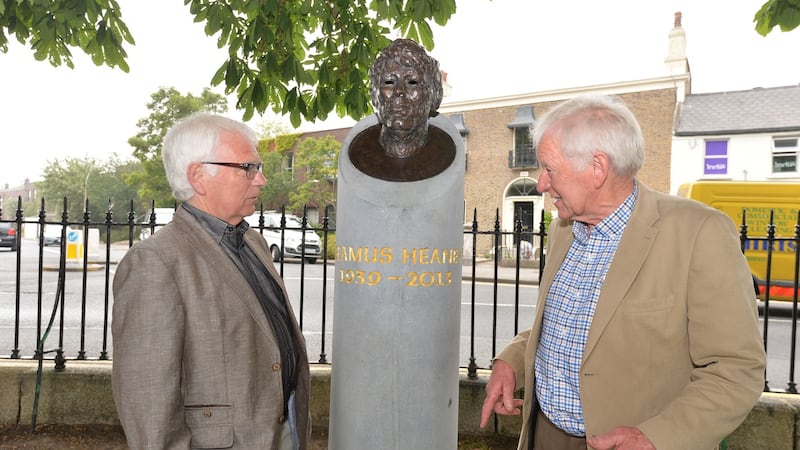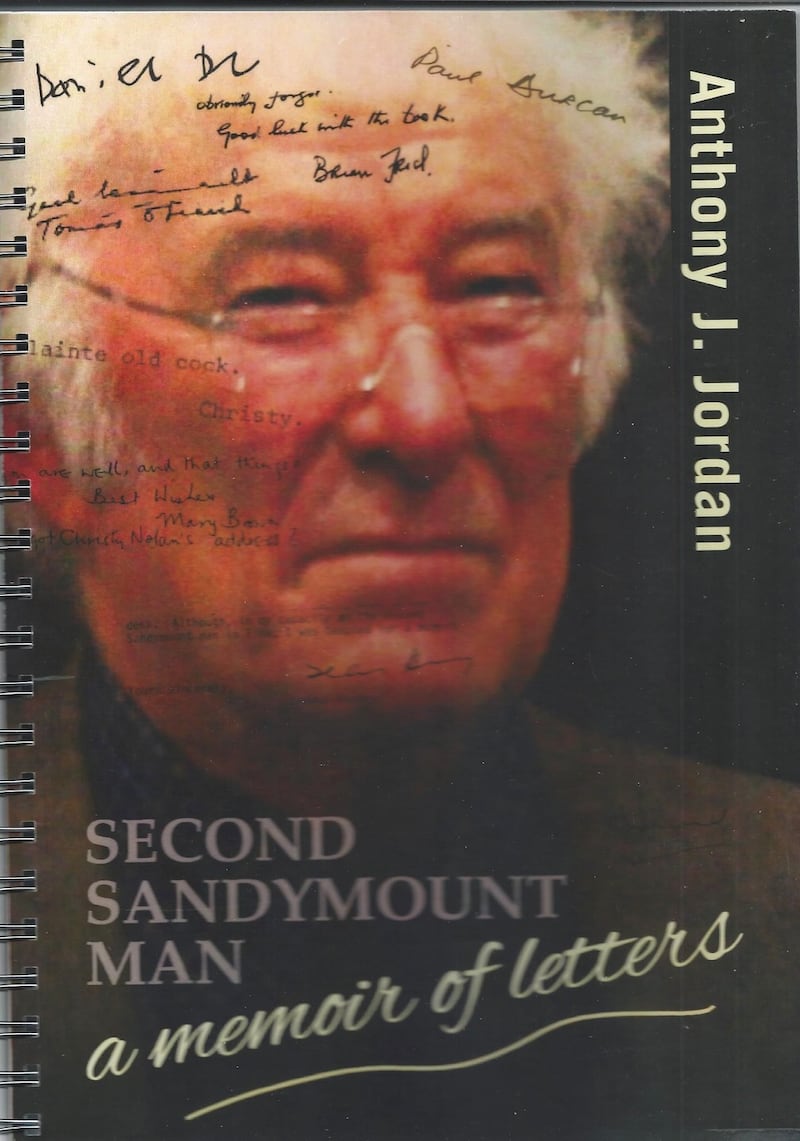Though Seamus Heaney and I had lived in the Sandymount area since the mid-1970s, I never laid eyes on him until the summer of 1983, when we both attended the unveiling of the Tribute Head in honour of Nelson Mandela.
The first time I had a one-to-one with him was in 1994 at the bar of Buswell’s Hotel in Molesworth St just across from Dáil Éireann. He had been giving a lecture in the vicinity, as I had myself, downstairs in Buswells to the Patrick Kavanagh Society. He was chilling out as he stood alone at the near empty bar. I joined him and introduced myself as a fellow resident of Sandymount, who wrote biographies. I asked him why since he lived on Sandymount Strand did he not write about it more? His answer seemed well practiced as he replied “Ah that’s Joycean territory and I don’t want to intrude”.
I had recently published a biography of Conor Cruise O’Brien under the title To Laugh or to Weep and Seamus was interested to know how I had found the man himself. Conor was the only contemporaneous subject I ever wrote of and as usual there were many stories to tell about that experience. This became the subject of our conversation. Though Seamus was a very famous poet and scholar, he was completely and graciously approachable, and wore his fame lightly. Indeed for me that was his glory. He asked me for a copy of the book and in due course I pushed it through his letterbox on Strand Road.

I was the principal teacher at Enable Ireland’s school on Sandymount Ave. It was on that same avenue that WB Yeats was born in 1865. There was a Yeats bust on nearby Sandymount Green. I began taking a group of our pupils there on each June 13th to commemorate the poet’s birthday for a poetry recital. So they were well versed on the fact that Yeats had won the Nobel Prize in 1923. When our neighbour on Strand Road won it in 1995, I thought it right that we write to Heaney and congratulate him. In our letter we pointed out that he was the second Sandymount man to have won the Nobel Prize. In his reply Seamus went to the trouble of listing each pupil’s name on his letter and thanked us for nominating him with a new title, which he was happy to accept.
Later when my study of The Gonne-Yeats Letters 1893-1938 was published in 1997 under the title of Willie Yeats and the Gonne-MacBrides, I invited Seamus to consider launching the book. The letter below was his good-humoured response. His reference to the “Second Sandymount Man” was the mention in an earlier letter of congratulation from the pupils in our school, when he was awarded the Nobel Prize for literature in 1995, “for works of lyrical beauty and ethical depth, which exalt everyday miracles and the living past”, after that other “Sandymount Man”, WB Yeats, had won it. His to me read:
Tony Jordan, CPI
Sandymount School and Clinic
Sandymount Avenue
Dublin 4
10 March, 1997.
Dear Tony Jordan,
Thank you for your letter. As a matter of fact, I recently declined to do the launch of Roy Foster’s new biography of WB Yeats, so that makes me feel a great deal better about saying no again.
As you will understand I am more or less in flight from engagements like this. I have to make an effort to stay at home and keep my nose to the desk. Although, in my capacity of second Sandymount man in line, I was tempted for a moment.
Yours sincerely
Seamus Heaney
Some years later in 2003 I wrote a rather critical biography of WB Yeats, subtitles Vain; Glorious; Lout. It drew some negative reviews. I delivered a copy to Seamus and awaited a reply. It was not long in coming as he wrote:
Dear Tony Jordan,
Thanks for leaving in your book. I’m afraid the subtitle struck me as a bit of an uppercut, but as I cast my eyes over the text I realized it was more vehement than the substance of the book you have actually written.
A lot of work there.
I look forward to reading it when I get the opportunity today is still holiday go in this house.
Best for 2004.
Seamus Heaney.

The last time I met Heaney was in July 2013 at the biannual conference on Ezra Pound in Trinity College. We were both participating contemporaneously so that I did not hear him speak. On my way out of the auditorium I saw him sitting alone in the almost empty hall. He asked me what my paper was about. He was taken to hear that it was an account of the meeting between Ezra Pound and Arthur Griffith in London during the Anglo-Irish treaty negotiations in 1921. Pound had later written one of his Cantos about it. Seamus asked to see a copy of my paper. I never saw him again for he died suddenly on August 30th. In Croke Park on the next day, his image was flashed up on the screen and 80,000 people stood for a minute’s silence before applauding for some minutes. The following day his funeral became a national event which I attended.
At the funeral Mass, Monsignor Brendan Devlin, who had been one of my lecturers at Maynooth many years earlier, spoke movingly. He said: "Just as I hold that it is not for a Christian minister to embark on eulogy or to praise the talents and achievements of those who have gone before us, neither is it for me to audit virtues and good works of Seamus Heaney. After all, as Wisdom tells us of great men, their good works go before them. And yet, when we read that series of sharp-witted paradoxes that we call the Eight Beatitudes and which are the core of the Sermon on the Mount, what you might call the identikit portrait of the ideal Christian, it cannot but strike us how many of them apply readily to our memories of Seamus Heaney…"
Anthony J Jordan's latest book is Second Sandymount Man: a Memoir of Letters.
.










